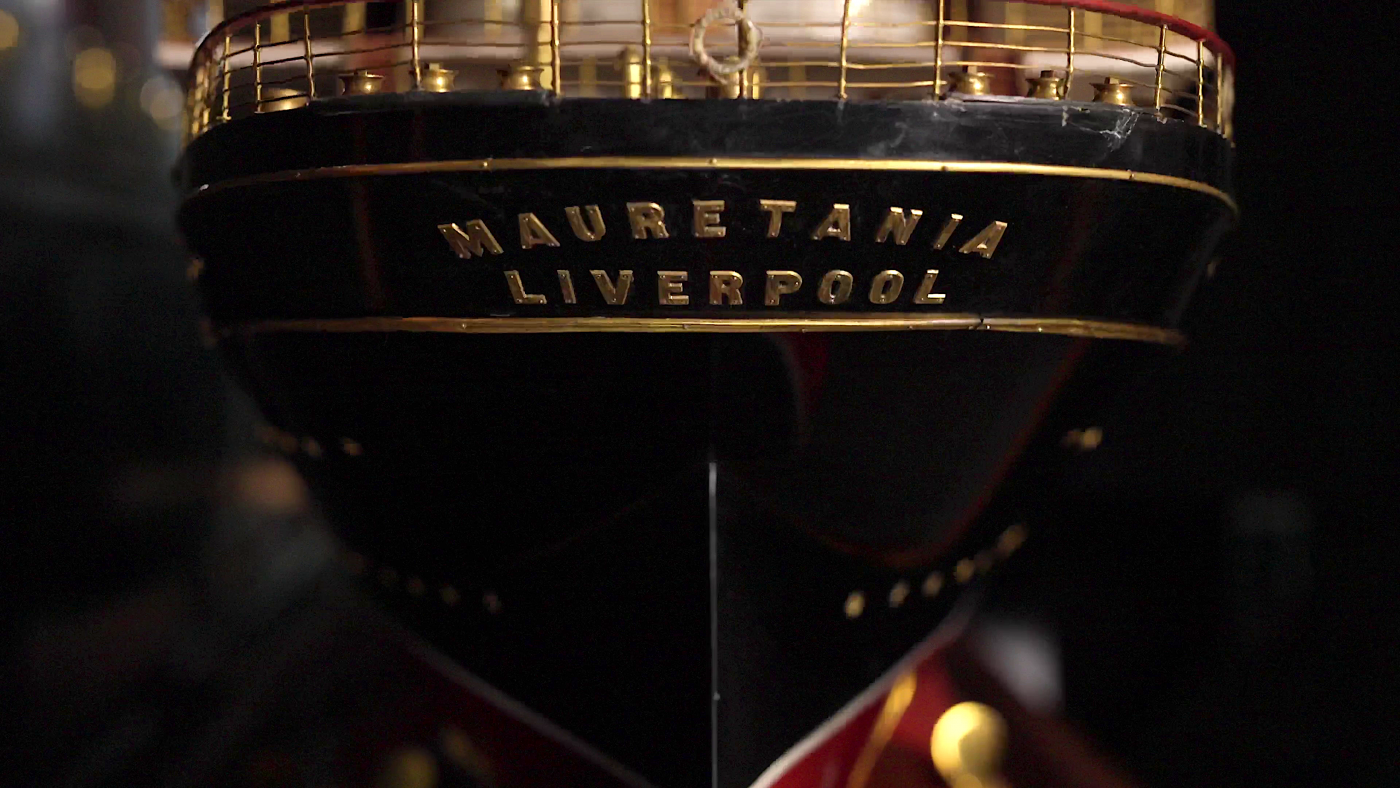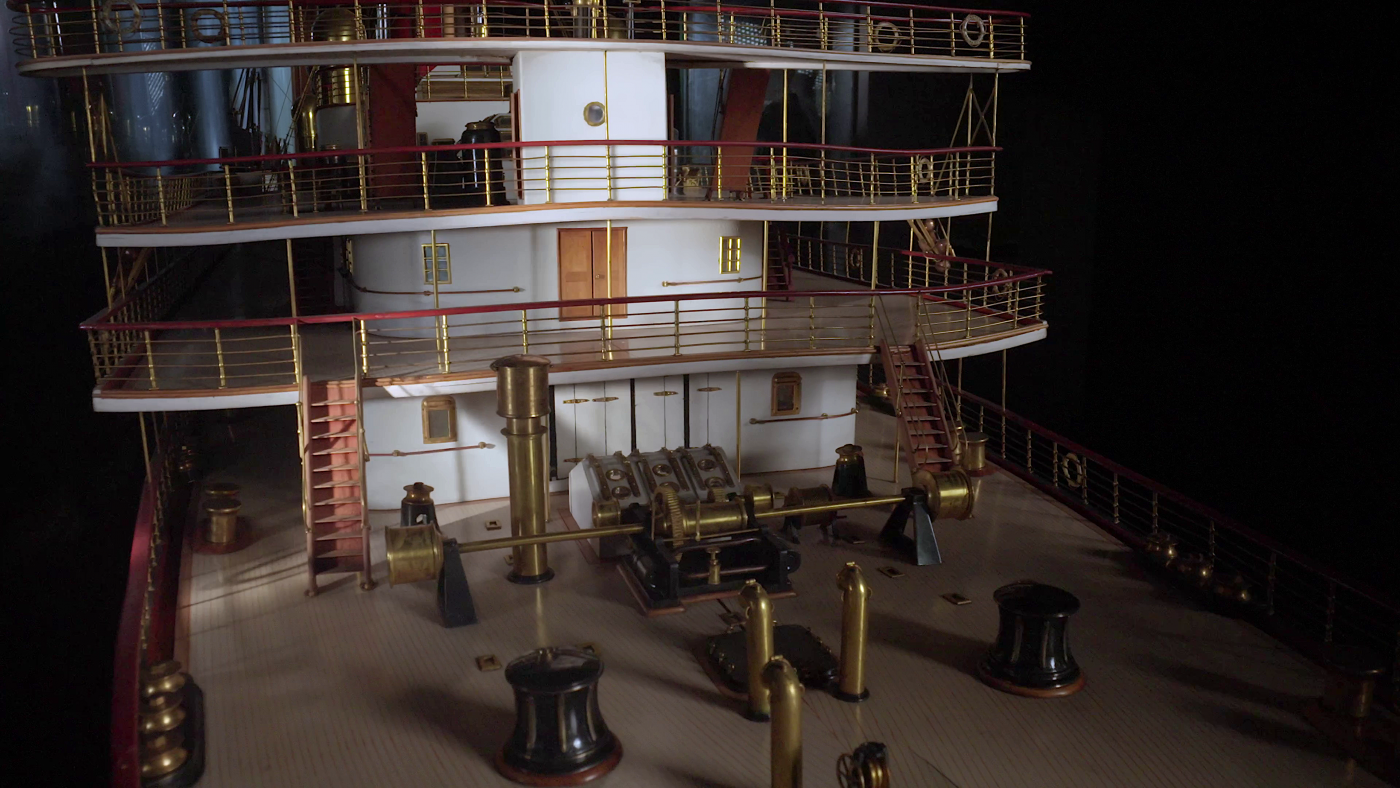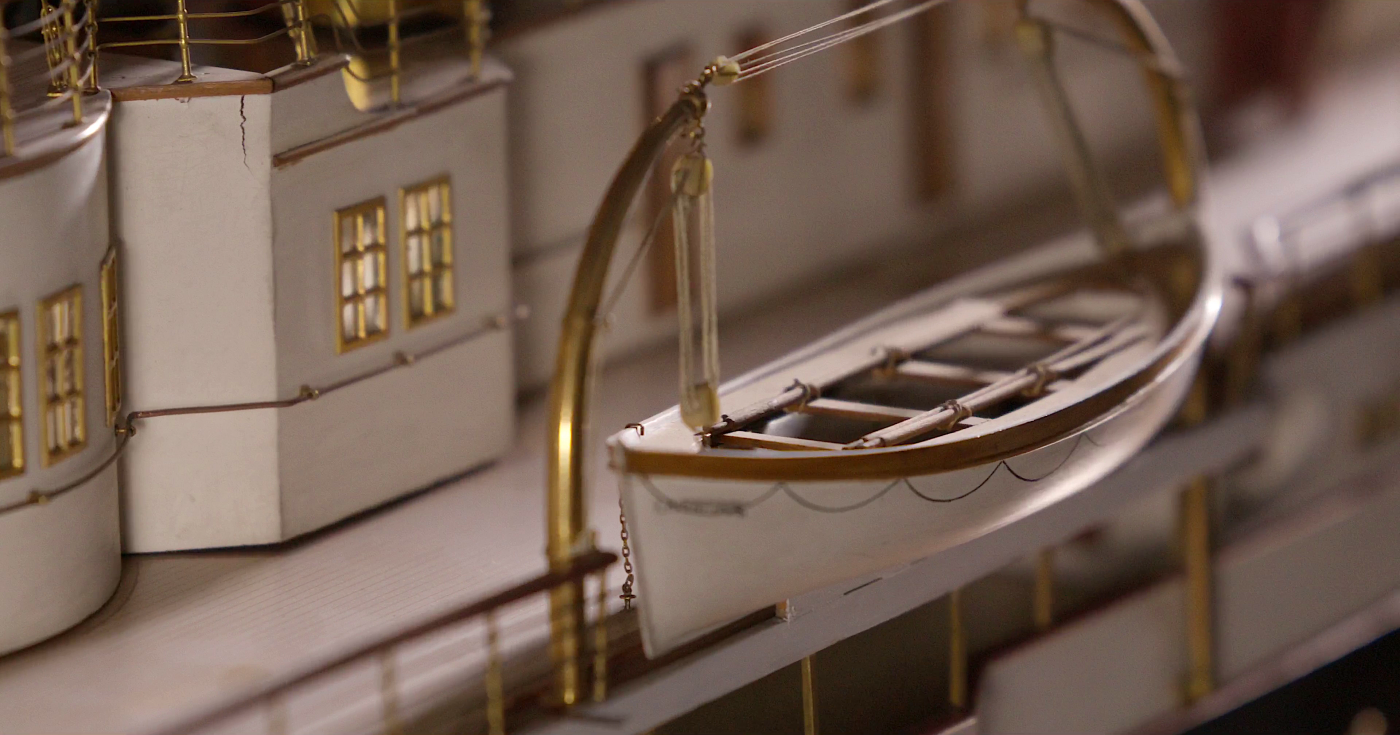Maritime Innovation In Miniature
RMS Mauretania
This is a model of RMS Mauretania, a passenger liner operated by the Cunard Line. She was built by Swan Hunter & Wigham Richardson in the River Tyne and launched in August 1906. The initials RMS mark her out as a Royal Mail Ship, meaning she was contracted to carry mail on behalf of the British Government, as well as passengers.
She was launched at a time of great international competition. By 1906 German liners dominated the Atlantic and the American financier J.P. Morgan had recently acquired the British White Star Line and intended to monopolize the trans-Atlantic routes. Mauretania was an attempt by the British to regain supremacy, and to do so with an unprecedented and unrivalled vessel.

At the time of her launch she was the largest moving structure in the world and remained the largest ship in the world for the next four years, until the launch of RMS Olympic in 1910. She was 240.8m long with a beam of 26.8m. She had a gross register tonnage of 31,938 tonns, could carry 2,165 passengers, with a crew of 802. She had eight decks. Not only was Mauretania impressive for her size, she was also a technological marvel.
In recent years marine propulsion had undergone a revolution with the introduction of the steam turbine engine, invented by Charles Parsons and first used in the Turbinia in 1894. The turbine engine had significant advantages over the traditional steam engine. It produced far greater speed and could maintain that speed for days at a time, rather than hours, and required less maintenance.
Mauretania was the largest application yet of the new technology. Her engines were of a new, untested design. A charming aspect of this model is that it is shown with Turbinia at her starboard bow, recreating the meeting in October 1907 of the first turbine-driven vessel in the world, and the largest.
Mauretania’s turbines produced an astonishing 51,000 kw of power at her launch and she could cruise at 25 knots, significantly faster than even the most efficient quadruple expansion steam engines. This new propulsion was not without its problems, however, and during her speed trials caused significant vibration at high speeds causing her hull to be strengthened and her four 3-bladed propellers to be redesigned.

One interesting aspect of her hull form is a ‘cut-out’ in her keel just forward of the propellers. This was intended to direct wash from her propellers against her hull to create lift, as her high speed would cause her stern to squat low in the water. An unexpected aspect of her design can be seen in her bow. Mauretania features a distinctive straight bow. Designed so that she would plunge through a wave rather than crest it, the unforeseen consequence was that she would pitch forward alarmingly, even in calm weather, allowing huge waves to splash the bow and forward part of the superstructure.
Her maiden voyage was from Liverpool to New York on 16th November 1907 and she soon captured back the Blue Riband from her great rival, the German liner Kaiser Wilhelm II, which had in turn taken it from the Cunard Line’s Campania. Mauretania held the speed records for both the eastbound and westbound crossings for twenty years.
A truly iconic ship of her age, she had a grand interior designed in Edwardian style by British architect Harold Peto. Twenty-eight different types of wood were used, along with marble and tapestries. The first-class dining saloon was notable for its large dome skylight. The third-class accommodation was a major improvement upon the unsanitary conditions of previous liners. She also had elevators, an innovative feature on passenger liners at that time, and those elevators were equipped with grilles made of aluminum – a novel material that would transform engineering.

Mauretania captured the public imagination throughout her long career. She survived the First World War and was sold for scrap in 1935. To this day, her bell is in the offices of Lloyd's Register in London. This specific model was made as a marketing tool for the shipyard to promote the marvelous developments of maritime innovation that went into her construction and reminds us today of the dramatic changes in maritime technology that happened on the River Tyne and changed the world forever.

